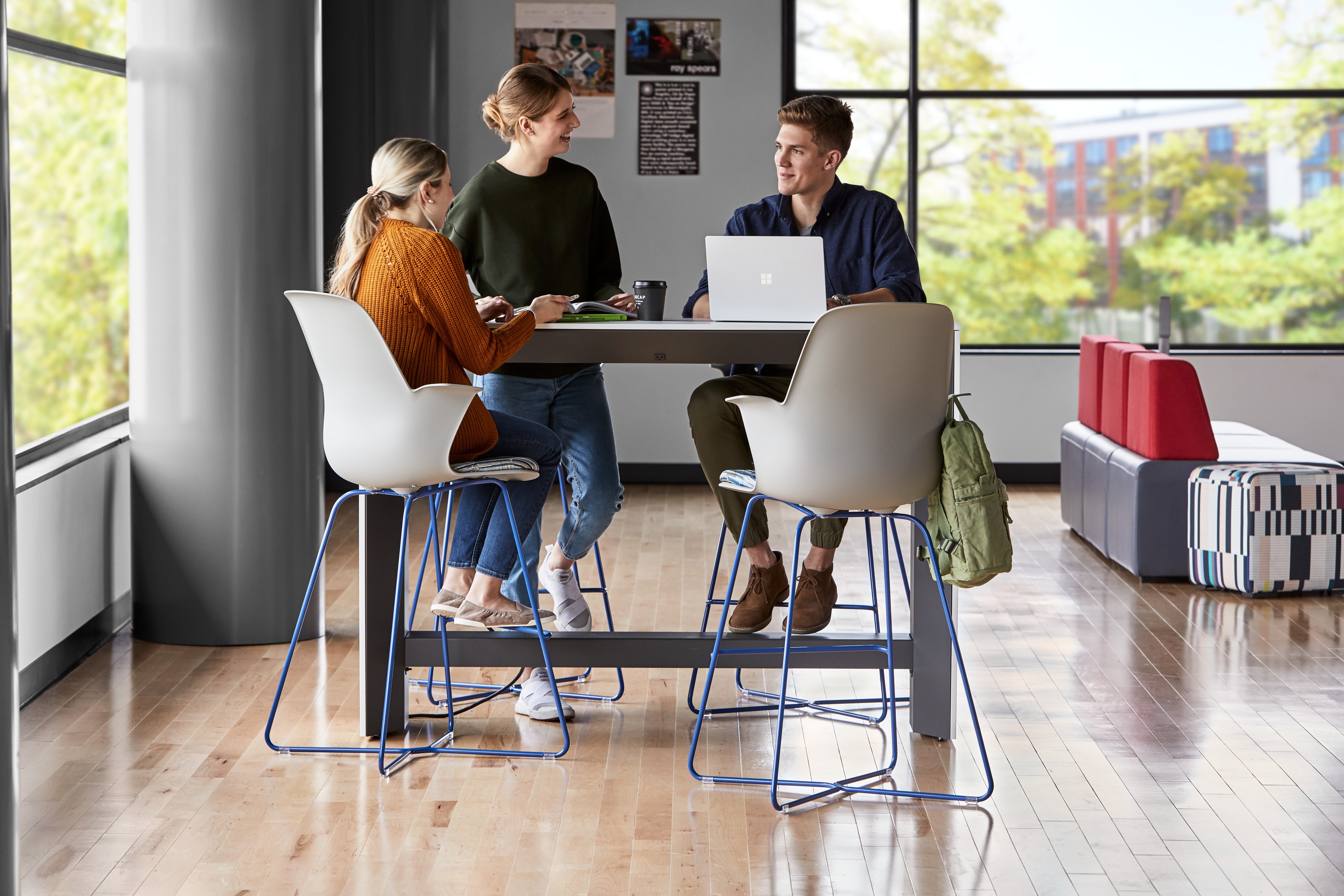We use cookies to maximize your online experience with us. By closing this window, you consent to our cookie policy. You can change your cookie settings in your browser any time. For more information, please see our Privacy Policy located on the footer of this site.
Opportunities Beyond the Classroom: In-Between Spaces that Work

Learning and growth are no longer restricted to the classroom or library – the space in between classrooms and other traditional learning environments is valuable real estate where students and faculty collide regularly.
Hallways, lounge spaces and common areas are no longer just empty spaces that students and faculty pass through as they go from one place to another. These transitional spaces can be instrumental in making someone feel connected through simple interactions. They are an extension of the formal classroom, where additional learning and collaboration occur when students and faculty gather. They’ve become productive spaces where students can compare notes with each other, discuss assignments or review for tests or exams. Students can also catch up with a teacher before or after class to ask additional questions and clarify lecture content. Conversely, these are also important spaces for teachers and students to step out to take a break, rest and recharge.

By providing students and faculty with easy, adaptable ways to turn these spaces into environments they want to use, we can create an extension of formal learning spaces and offer more casual learning commons areas.
RECLAIM UNDERUTILIZED REAL ESTATE
Shared spaces should be considered with just as much scrutiny as a 21st century classroom or faculty space to improve and cultivate learning.
Being able to easily settle in and make the space feel like it’s their own, even when it’s only on a small scale, helps students get comfortable and can increase the time they spend there. When people are comfortable, they’re more likely to share their unique ideas with their peers when working together on group projects. This results in increased and improved collaboration.

As both individuals and groups use these areas, the space itself should be flexible. Give students choice and control over how they learn by giving them the opportunity to move furniture to the extent that it will support both solo work and collaboration sessions for partner or larger group projects.
Install a variety of seating options so that students and educators can choose what setting will best support their different postures as they learn, collaborate, socialize, focus or rest and recharge. Lounge, nested or stacked seating options allow people to settle in and get comfortable for longer sessions that have a specific goal, while standing height tables and chairs encourage people to walk up and connect with one another in a casual way for shorter conversations. Booth seating options can support both socialization and studying, as well as offer students and instructors a space with a little more privacy.
Readily available analog and digital tools provide students the support they need for better collaboration. Worksurfaces are necessary for holding books, laptops, tablets and other materials that they’ll refer to. Whiteboards, tackable surfaces, screens with videoconferencing capabilities, Wi-Fi and power sources allow students to easily share ideas with one another, whether in the room or remote. When furniture with built-in power charging capabilities is incorporated, students are more likely to linger for longer periods of time. Meeting students’ needs to keep their devices charged and easily share information ensures the space has added functionality.

When instructors provide time for breakout sessions during classes and students are instructed to collaborate for longer periods of time, they may leave the classroom setting in search of an area that better supports their group work. Supporting different postures and workstyles can enhance their productivity as they share ideas.
Proximity plays an important part too. If an individual feels like they’re too close or too far – whether it’s from another person or the technology and tools in the area – they’re less likely to use the space.
HELP STUDENTS AND FACULTY FOCUS
Traditionally, these spaces are open areas where students and faculty move freely. Sometimes however, there is a need for quieter, more private areas – places to focus and complete assignments, review presentation notes one last time, or prep for an upcoming exam. As humans we also crave comfort; pods, phone booths, enclosed spaces, and other shielded settings can provide privacy and areas where students and staff can feel protected without feeling isolated from the hustle and bustle of a busy hallway.

Incorporating sound masking systems and speech privacy technology allows students and staff to stay focused when they are working individually or in smaller groups. Since these environments aren’t formal learning areas, students may be louder and more energetic upon exiting a classroom or lecture hall as they run into friends and peers who were in other classes. This can affect students who are already in the space, and potentially lead to a decrease in focus for individuals who are trying to finish an assignment before their class begins or review notes with their group members. Sound masking and speech privacy technology can mute the liveliness and energy of these spaces so students can remain focused on the task at hand.
Help your students and instructors bring learning outside the classroom and to all areas of your campus by contacting dancker today for ideas on how to increase the usage of your school’s in-between spaces.

